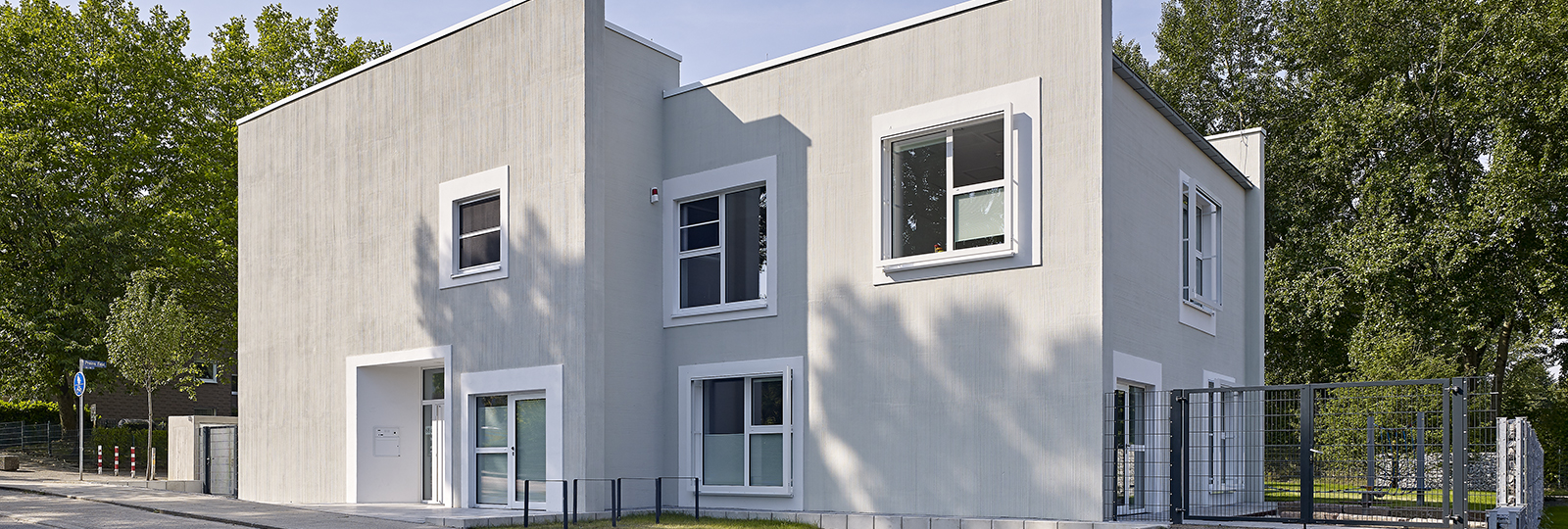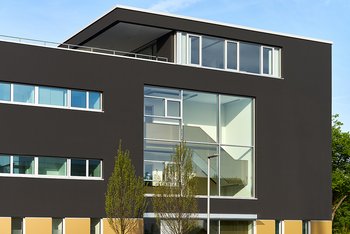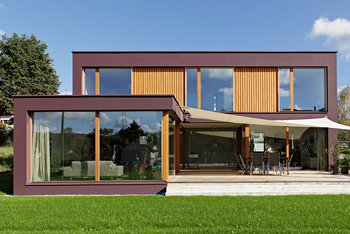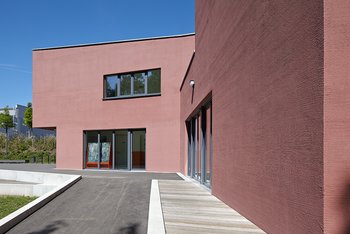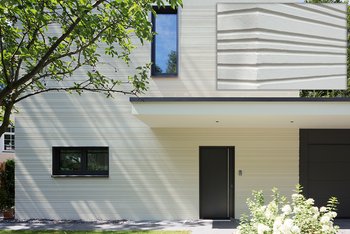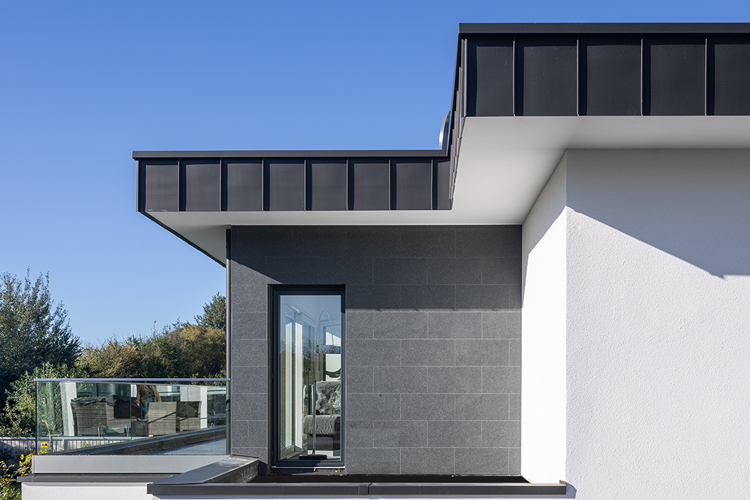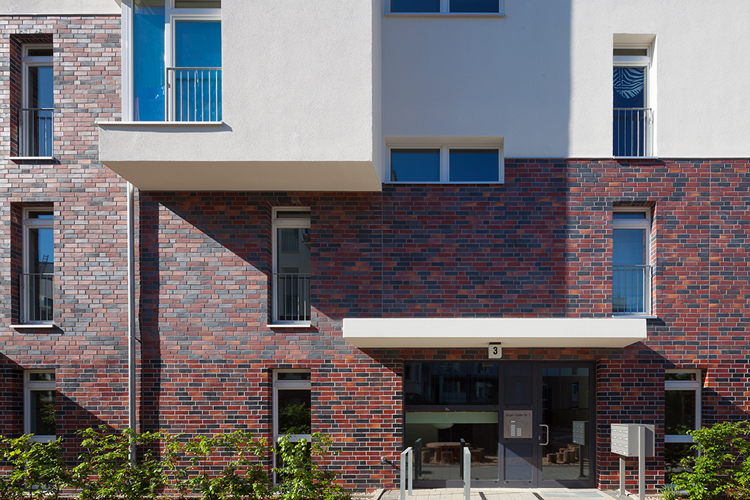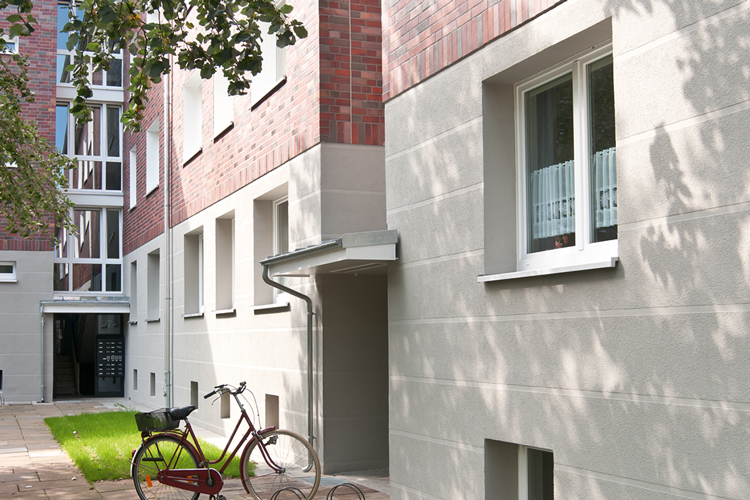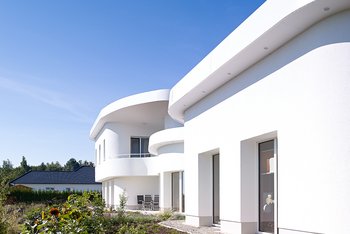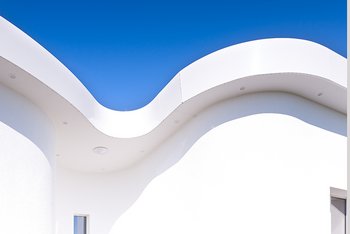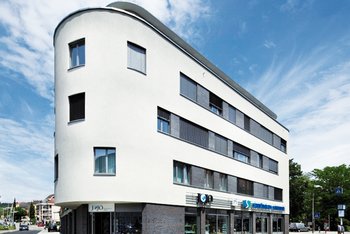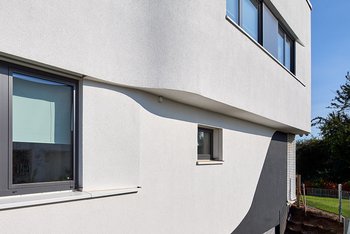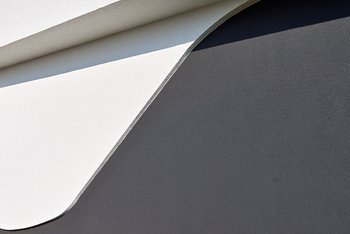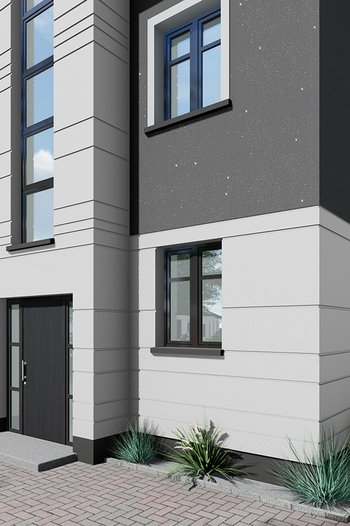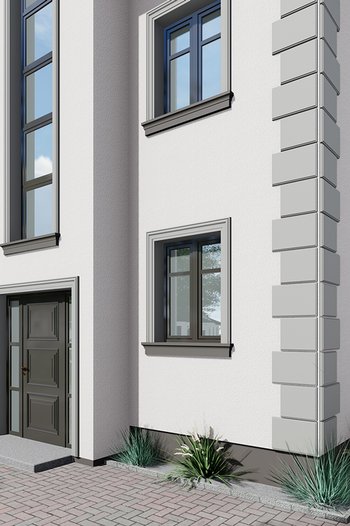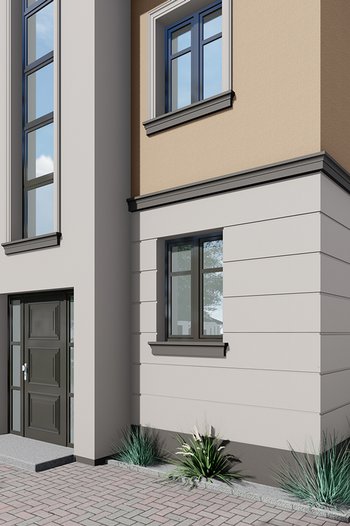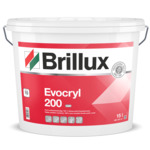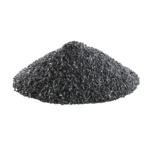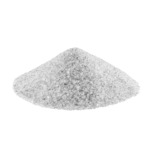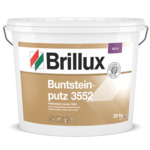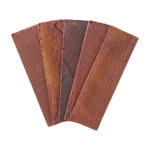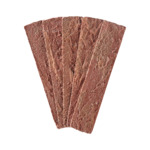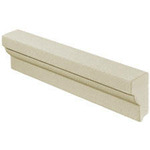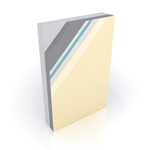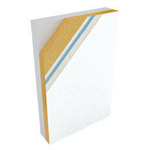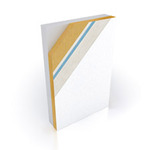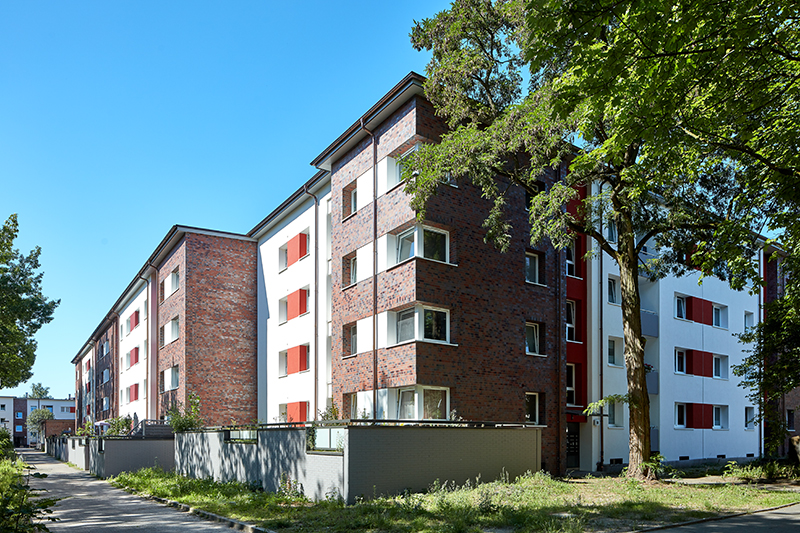Creative versatility: Designing ETICS facades
Title photo: Guido Erbring, Cologne
This article was published in Planquadrat, Issue 4/18
The print version can be ordered by sending an e-mail to kontakt@brillux.de
Well-designed facades live off the interplay between color, material and texture. This is, of course, also true for buildings with exterior walls that have been energy optimized with a thermal insulation composite system. The design options are practically unlimited today.
Whether a special plaster, a ceramic covering, a special facade profile or natural stone cladding – architects and tradesmen can now give their creativity free reign thanks to the wide variety of new products for ETICS facades.
With thermally insulated facades, increased requirements are often placed on the materials with regard to the mechanical or thermal resistance, for example. This is also the case with dark intense color shades. Thanks to a drastic reduction in the surface heat-up, using special pigments can minimize the unwanted heat accumulation that can occur on the surface of insulated facades in summer and remove the risk of cracking and deformations.
The Brillux SolReflex system only uses pigments which have a particularly good reflection behavior in the infrared range. With these special formulas, the surface temperatures always remain in the uncritical range. The TSR formula – TSR stands for Total Solar Reflection – ensures that lower temperatures can be achieved with dark color shades than with light, conventionally coated colored facades. With the facade paint Evocryl 200, planners can choose from 5000 tested intense color shades with the TSR formula.
Graphic design of facades: Textures on render
For some years now, traditional render techniques have been experiencing a renaissance. The craft techniques are well suited to modern architecture and are particularly effective for large rendered surfaces such as ETICS facades. For the texture-providing coatings, a high level of skill and technical know-how is required for the correct use of renders and accessories. The Brillux object service can support you here with project-specific advice.
The combing technique, for example, can create clear geometric textures which can give facades a three-dimensional design. Specially made steel combs are used to comb straight or wavy lines in the freshly applied render. The render technique places high demands on the tradesman carrying out the work, because the facade sections must be worked on seamlessly in one go.
With the broom stroke technique, on the other hand, the render is combed through with a fine, broom-like special tool. Its relief texture is unique, sometimes wider, sometimes narrower, with seams and abrasion marks, thus creating an extremely vibrant facade appearance. For this look, colored render can be applied or white render can be coated in the final color shade in a subsequent step.
Silicon carbide or a mirror fragment look can also create interesting effects for a unique facade. This adds fine glitter effects in light and dark facades. Until now, pebbledash render has been unfairly sentenced to a shadowy existence as base render. The little stones in a wide range of colors embedded in synthetic resin are extremely effective for decorative surfaces. Despite the dense structure, the render remains flexible and water-vapor-permeable after drying, making it perfect for use on ETICS.
Brick, tile and natural stone: ETICS with stone surfaces
Whether on new builds or as a reconstruction of the old facade during an energy-related renovation: Covered with facing brick slips, even ETICS facades can be designed in a brick look typical for the city or region. Although they are only 15 mm thick, these brick slips are fired stones with an extremely robust and shock-proof surface.
As a natural, mineral design with the advantages of a brick slip surface, whether as a complete brick facade or as an attractive combination in the form of a render and stone facade – the ceramic coverings combine a traditional brick look with high resistance. The design options are as varied as with traditional brickwork construction with solid bricks – built in a running bond pattern, with protruding brickwork layers or as a brick-built lintel over facade openings.
Ceramic tiles or natural stone are now also available as lightweight boards in thin format, which can be stuck on to ETICS facades. The natural material means that every ceramic or natural stone facade is different, because the textures, colors and patterns make each stone a unique piece in its own right. Whether sandstone, limestone or granite, whether ground, polished or satin-finished, the thin natural stone facade boards can be bonded easily to ETICS facades thanks to the special reinforcement mesh.
The effect is the same as with double-shell natural stone boards – real and durable stone facades can be created in large or small formats. Bricks and brick slips, tiles or natural stone boards are classed as practically maintenance-free and resistant to algal and fungal infestation and can be used as certified coatings in the ETIC Systems EPS Prime, MW Top and MW Ecotop from Brillux.
No need to be afraid of curved corners: ETICS for soft shapes
Buildings with flowing forms pose challenges for planners, because it doesn’t seem possible to achieve curves with a thermal insulation composite system. In reality, the solution is simple - once calculated, the concave or convex curves can be cut directly from the insulation boards – so precisely that they simply have to be mounted in the modular system with no further cutting required.
It goes without saying that an individual solution like this requires precise planning, where installation plans are developed and sample walls created in cooperation with the technical consultants at Brillux. On a sample like this produced in original scale, all the details of the ETICS facade produced exclusively for the project can be agreed directly between the builders, architects and implementing painting contractor, from the visual effect of the radii and the optimal reinforcement measures, the application of the selected render on the curved substrate, to the incorporation of the fire barriers made from mineral wool insulation boards in the organic facade shapes.
This method is also suitable for buildings where the design was not originally based on flowing shapes: This means that plain prefabricated constructions, for example, can be given a new lease of life and a striking modern appearance during renovation work with a soft building contour. But historical facades can also be replicated during renovations while adding highly effective energy saving measures.
Add accents with facade profiles: New dimensions
Facade profiles can transform buildings with a somewhat low-key architecture into extremely different character buildings. The original goal of profile elements was to restore the historic appearance of older buildings, dating back to the years of rapid industrial expansion in Germany, for example, following an energy-related modernization.
Frame, molding, panel, rustic stone and window sill profiles were developed for this purpose, which Brillux offers in many different versions. The prefabricated profile elements made from polystyrene hard foam with highly tempered, fiber-reinforced precoating are shock-proof and ideal for use on ETICS. These products are extremely easy to use thanks to their low weight and the profile ends cut at the factory.
Historic stucco elements can also be replicated based on a molding of the original. But the appearance of younger buildings or new builds can also be improved using facade profiles. Rustic stone facades can be replicated, for example, using special hard foam boards with a narrow groove pre-milled at the factory. Brillux offers three different groove designs here. The color shade and texture of the finishing render provide the finish for further visual designs.
Even more freedom is offered when creating a freely selected rustic stone bond pattern. Instead of the prefabricated rustic stone boards, standard insulation boards are used here and the grooves cut by the installers themselves with a hot wire cutter. Extremely modern designs are also possible: An asymmetrical joint cut, combined with a Creativ rendered facade with mirror fragment look, can turn a simple, even disproportionate old building into a contemporary, modern home.
